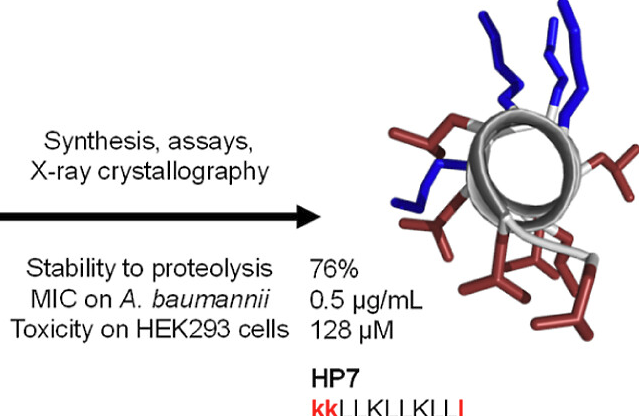To Fold or Not to Fold: Diastereomeric Optimization of an α-Helical Antimicrobial Peptide

Check out our latest paper To Fold or Not to Fold: Diastereomeric Optimization of an α-Helical Antimicrobial Peptide in Journal of Medicinal Chemistry!
Abstract
Membrane disruptive α-helical antimicrobial peptides (AMPs) offer an opportunity to address multidrug resistance; however, most AMPs are toxic and unstable in serum. These limitations can be partly overcome by introducing D-residues, which often confers protease resistance and reduces toxicity without affecting antibacterial activity, presumably due to lowered α-helicity. Here, we investigated 31 diastereomers of the α-helical AMP KKLLKLLKLLL. Three diastereomers containing two, three, and four D-residues showed increased antibacterial effects, comparable hemolysis, reduced toxicity against HEK293 cells, and excellent serum stability, while another diastereomer with four D-residues additionally displayed lower hemolysis. X-ray crystallography confirmed that high or low α-helicity as measured by circular dichroism indicated α-helical or disordered structures independently of the number of chirality switched residues. In contrast to previous reports, α-helicity across diastereomers correlated with both antibacterial activity and hemolysis and revealed a complex relationship between stereochemistry, activity, and toxicity, highlighting the potential of diastereomers for property optimization.
Author(s): Hippolyte Personne, Thierry Paschoud, Sofia Fulgencio, Stéphane Baeriswyl, Thilo Köhler, Christian van Delden, Achim Stocker, Sacha Javor, and Jean-Louis Reymond